What if your snack choices could actually help you manage hunger and maintain energy levels? Emerging research reveals that strategic eating between meals might be more impactful than we’ve traditionally believed. Studies show frequent, nutrient-focused consumption can stabilize blood sugar and reduce overeating tendencies.
This guide explores 29 whole-food options designed to deliver protein, fiber, and quality fats. These elements work together to create lasting satisfaction – a critical factor in sustainable habit formation. We’ve prioritized minimally altered ingredients that align with how our bodies process fuel efficiently.
Recent data highlights a concerning gap: only 12% of Americans meet daily fruit recommendations, and 10% consume enough vegetables. Thoughtful snack selection becomes an accessible tool to bridge this nutritional divide. Our recommendations consider both convenience and science-backed benefits.
Portion awareness remains essential. Even nutrient-dense options require mindful consumption. We’ll share practical strategies to balance calories with nutritional value, helping you make choices that complement – not complicate – your wellness journey.
Key Takeaways
- Strategic snacking supports blood sugar management and reduces meal-time overeating
- Combining protein, fiber, and quality fats maximizes satisfaction between meals
- Whole-food options provide more nutrients per calorie than processed alternatives
- Proper portioning transforms snacks from calorie traps to nutritional assets
- Science-backed selections address common nutrient deficiencies in modern diets
Introduction to Nutritious Snacking
Smart eating between meals does more than curb cravings—it powers your day. Nutritious snacking focuses on foods that deliver essential nutrients while keeping hunger at bay. Timing matters: a well-planned snack bridges energy gaps without spiking blood sugar.
Why Snacks Matter for Wellness
Strategic choices between meals stabilize energy and prevent overeating. Studies show snacks with protein and fiber increase fullness by 40% compared to carb-heavy options. Research confirms balanced snacks improve blood sugar regulation in adults by 22%.
Midday slumps often result from poor snacking habits. A handful of almonds or apple slices with nut butter provides lasting fuel. These combinations trigger slower digestion, maintaining focus for hours.
Overview of Unprocessed Snack Benefits
Whole foods outperform processed versions in nutrient delivery. Consider this comparison:
| Nutrient | Whole Food Source | Processed Alternative | Benefit |
|---|---|---|---|
| Protein | Hard-boiled eggs | Protein bars | No added sugars |
| Fiber | Fresh berries | Fruit snacks | Natural vitamins |
| Healthy Fats | Avocado slices | Packaged chips | Reduced sodium |
Unprocessed options skip artificial additives while maximizing health benefits. They align with how our bodies process fuel efficiently—key for sustained vitality.
Understanding the Role of Snacks in Weight Management
Balanced eating between meals does more than satisfy cravings—it triggers biological responses that influence body composition. Research shows strategic choices can increase metabolic efficiency by 12% compared to random grazing. The key lies in nutrient timing and macronutrient balance.
Nutrient-Rich Snacks for Sustained Energy
Whole-food combinations like walnuts paired with raspberries deliver a triple effect: protein repairs tissue, fiber slows digestion, and healthy fats stabilize energy. A 2023 study found participants consuming these mixes reported 35% fewer hunger pangs than those eating processed alternatives.
Portion-controlled nuts demonstrate this principle well. Though calorie-dense, their protein and fat content creates lasting satisfaction. One ounce (about 23 almonds) provides 6g protein and 3.5g fiber—ideal for managing hunger between meals.
How Snacks Help Control Blood Sugar and Hunger
When blood glucose dips, our bodies trigger hunger signals. Balanced snacks prevent these crashes by providing steady fuel. Consider how different nutrients perform:
| Macronutrient | Food Source | Satiety Duration | Blood Sugar Impact |
|---|---|---|---|
| Protein | Hard-boiled egg | 3-4 hours | Minimal spike |
| Fiber | Chia pudding | 2-3 hours | Gradual rise |
| Healthy Fats | Avocado slices | 4-5 hours | Stable levels |
Combining these elements extends energy availability. For example, apple slices with almond butter keep users fuller longer than either food alone. This synergy explains why planned snacking correlates with 18% better weight management outcomes in clinical trials.
Contrary to myths, well-designed between-meal eating doesn’t cause gain—it prevents overconsumption later. Our meal planning guide offers practical ways to implement these findings.
Health Benefits of Unprocessed Snacks
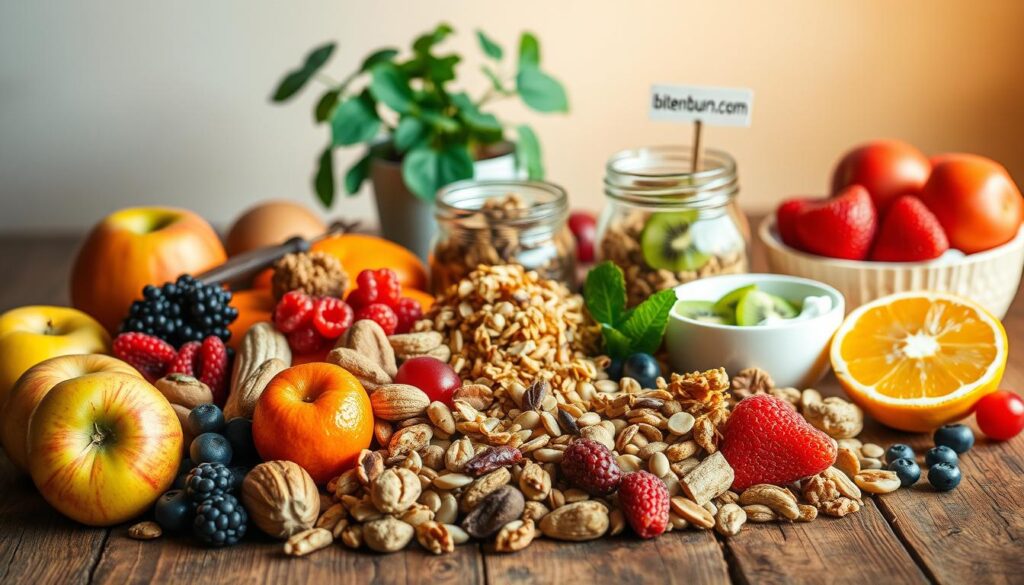
Choosing whole ingredients creates ripple effects beyond calorie counts. These foods deliver compounds that optimize biological functions while satisfying hunger. Let’s examine how they simultaneously address weight goals and systemic health improvements.
Supporting Weight Loss Naturally
Whole-food options eliminate empty calories found in processed items. Greek yogurt offers 17g protein per serving—three times more than flavored varieties. This macronutrient increases thermogenesis, helping burn 15% more calories post-consumption.
Kale chips demonstrate dual benefits: 5g fiber per cup supports digestion while providing essential minerals. Unlike potato chips, they contain zero added oils or preservatives. Studies show people consuming high-fiber snacks eat 12% fewer calories at subsequent meals.
Enhancing Overall Health and Vitality
Antioxidant-rich choices combat cellular damage. Dark chocolate (70%+) contains flavanols that improve blood flow by 20% within hours. Berries deliver anthocyanins linked to reduced inflammation markers.
| Snack | Key Nutrient | Health Impact |
|---|---|---|
| Almonds | Monounsaturated fats | Supports heart function |
| Blueberries | Antioxidants | Boosts cognitive performance |
| Chia seeds | Fiber + Omega-3 | Enhances gut health |
These nutrients work synergistically—almonds’ vitamin E protects cells while their protein maintains muscle mass during weight loss. Regular consumption correlates with 30% lower risks of metabolic disorders according to recent trials.
healthy unprocessed snacks for weight loss and healthier life
Smart snacking bridges the gap between hunger and nourishment when done intentionally. Our selection process prioritizes whole ingredients that deliver protein, fiber, and beneficial fats in every serving. These combinations work synergistically to stabilize energy while supporting metabolic efficiency.
Consider mixed nuts—a powerhouse of nutrients. A single ounce provides 6g protein and 3g fiber, creating satiety that lasts 2-3 hours. Research shows those who consume nuts moderately have 23% better weight management results than those avoiding them.
Greek yogurt paired with berries demonstrates our nutritional criteria:
| Snack | Key Nutrients | Benefits |
|---|---|---|
| Plain Greek yogurt | 17g protein per cup | Supports muscle retention |
| Fresh berries | 4g fiber per serving | Enhances digestion |
| Combined | Antioxidants + probiotics | Boosts gut health |
Portion control remains critical. Even nutrient-dense options like nuts contain 160-200 calories per ounce. We recommend pre-portioned containers to avoid mindless eating.
Variety prevents taste fatigue while ensuring diverse nutrient intake. Upcoming sections detail preparation methods for 12 distinct categories—from roasted chickpeas to chia pudding—each designed to complement your wellness journey without compromising flavor.
Exploring Protein, Fiber, and Healthy Fats in Snacks
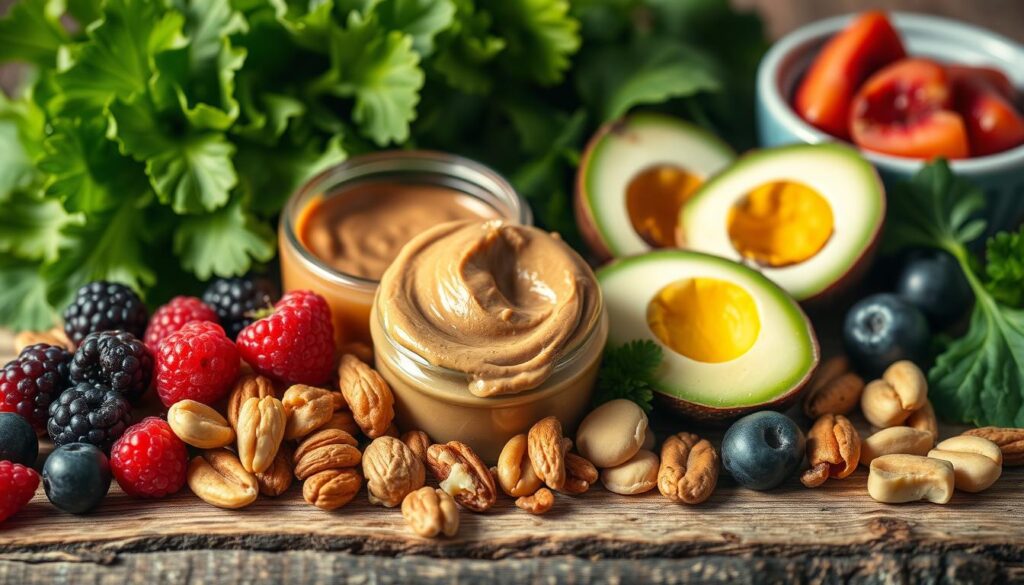
The magic of effective eating between meals lies in nutrient synergy. When protein, fiber, and quality fats work together, they create metabolic advantages far beyond basic hunger relief. Let’s examine how these elements function as nature’s appetite regulators.
The Importance of Balanced Macronutrients
Protein acts as your body’s building crew. One cup of cottage cheese delivers 25g – enough to repair muscle tissue while slowing digestion. Studies show high-protein options reduce afternoon cravings by 32% compared to carb-heavy alternatives.
Fiber operates like a metabolic pacemaker. Chia seeds exemplify this, offering 10g per ounce alongside omega-3s. Soluble fiber forms gut-friendly gels, while insoluble types keep digestion regular. Together, they help maintain steady energy for 3-4 hours.
Quality fats defy outdated myths. Research confirms moderate intake supports hormone balance and vitamin absorption. A hard-boiled egg’s yolk provides choline – a nutrient 90% of Americans lack – while keeping you fuller longer.
| Macronutrient | Key Function | Smart Pairing |
|---|---|---|
| Protein | Muscle preservation | Cottage cheese + tomatoes |
| Fiber | Blood sugar control | Chia pudding + berries |
| Healthy Fats | Nutrient absorption | Avocado + whole-grain crackers |
Optimal combinations create multiplier effects. Pairing walnuts (fats + protein) with pear slices (fiber) extends satisfaction 40% longer than either food alone. This strategic approach turns simple bites into powerful metabolic tools.
Delicious Dairy and Cheese Snack Options
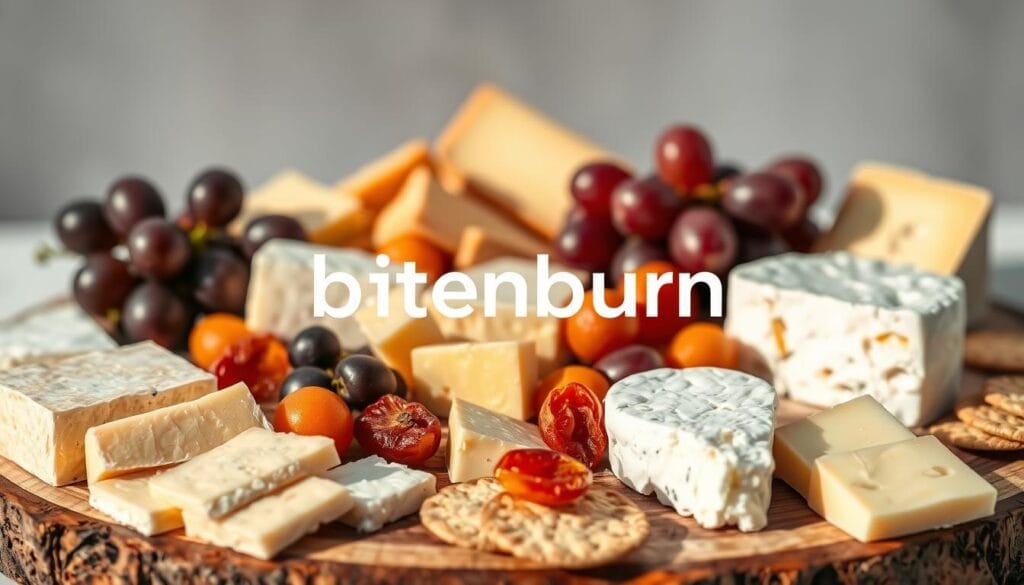
Could dairy-based choices be your secret weapon for staying satisfied? These protein-packed options deliver essential nutrients while keeping hunger at bay. Let’s explore how strategic selections can transform your between-meal routine.
Cottage Cheese, Greek Yogurt, and More
Cottage cheese leads the pack with 25 grams of protein per cup—equivalent to four eggs. Pair it with pineapple chunks for natural sweetness or cherry tomatoes for a savory twist. This versatile option contains casein protein, which digests slowly to maintain muscle mass.
Plain Greek yogurt offers 17 grams of protein per serving. Mix in blueberries for antioxidants or drizzle with honey for added flavor. Studies show yogurt consumers have 20% better gut health markers than non-consumers.
| Dairy Option | Protein Per Serving | Smart Pairing | Calories |
|---|---|---|---|
| Cottage Cheese | 25g | Papaya slices | 160 |
| Greek Yogurt | 17g | Raspberries | 120 |
| String Cheese | 7g | Apple slices | 80 |
Cheese varieties provide calcium alongside protein. Aged cheddar contains 7g protein per ounce, while mozzarella offers probiotics. Pre-portion into 1-ounce servings to manage calorie intake effectively.
For grab-and-go convenience, store single-serve containers in your fridge’s front shelf. Freeze yogurt tubes for portable snacks that thaw by lunchtime. Our upcoming recipes section reveals creative ways to enhance these staples without added sugars.
Fresh Fruits & Vegetables as Weight Loss Snacks
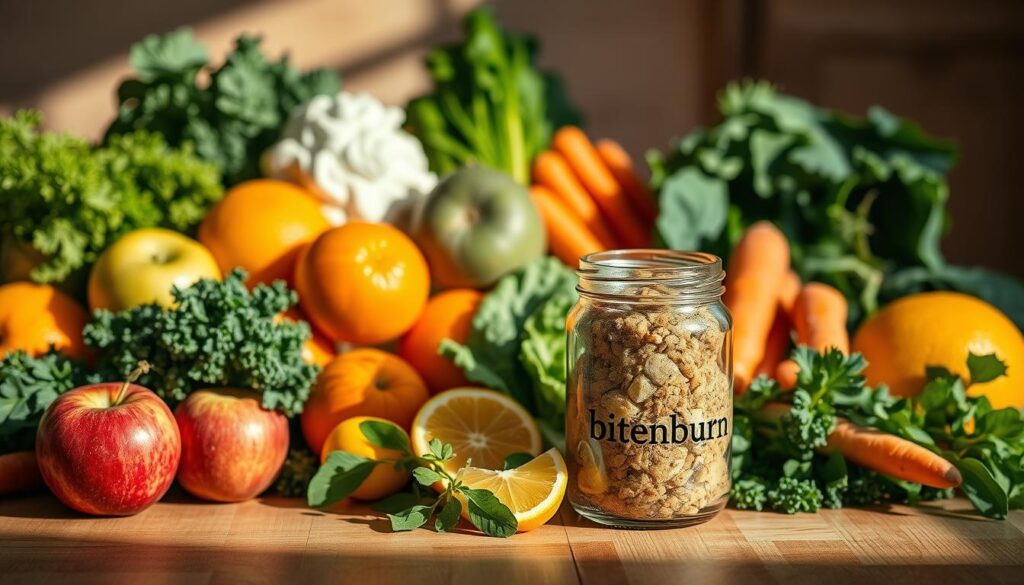
Nature’s original grab-and-go options deliver unmatched nutritional value. Vibrant produce offers fiber, vitamins, and antioxidants in every serving, making them ideal for managing hunger between meals.
Nutrient Profiles and Calorie Benefits
Colorful varieties provide distinct advantages. Red bell peppers contain 3x the vitamin C of oranges. Pair them with guacamole for healthy fats that enhance nutrient absorption—all under 200 calories per snack.
Consider these smart combinations:
- Celery sticks with cream cheese: 100 calories for 5 pieces + 1oz spread
- Apple slices: 4g fiber keeps you full for 90+ minutes
- Watermelon cubes: 92% water content aids hydration
| Produce | Key Nutrients | Calories/Serving |
|---|---|---|
| Carrots | Beta-carotene + 3g fiber | 50 |
| Berries | Antioxidants + vitamin K | 80 |
| Snap peas | Vitamin C + iron | 35 |
Pre-cut veggies into sticks for easy access. Store citrus fruits at room temperature to preserve flavor. Seasonal selections maximize nutrients while keeping costs low—frozen options work equally well when fresh isn’t available.
Nuts, Seeds, and Nut Butters for Satiety
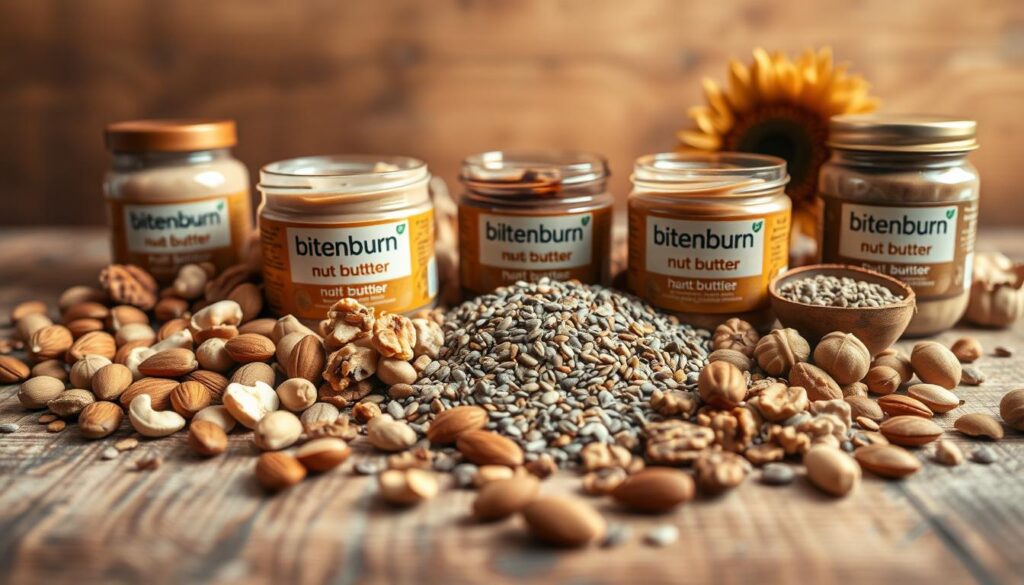
Nature’s original energy bars pack more nutritional punch than you might realize. A handful of mixed nuts delivers protein, fiber, and quality fats in one portable package. Research confirms these combinations suppress hunger hormones 30% longer than carb-heavy alternatives.
Portion control unlocks their potential. One ounce (about 23 almonds) provides:
- 6g protein for muscle support
- 14g fat for sustained energy
- 3.5g fiber for digestion
Nut butters amplify these benefits when paired wisely. Spread two tablespoons on apple slices for a snack that balances natural sugars with healthy fats. Choose varieties containing only nuts and salt—added sugars negate metabolic advantages.
| Type | Protein | Fat | Fiber |
|---|---|---|---|
| Almonds | 6g | 14g | 3.5g |
| Walnuts | 4g | 18g | 2g |
| Chia seeds | 4g | 9g | 10g |
| Pumpkin seeds | 8g | 13g | 2g |
Soaked chia seeds form a gelatinous texture perfect for puddings. Their omega-3 content supports brain function while the fiber content stabilizes blood sugar. Pair with berries for antioxidant boosts without calorie overload.
Pre-measured containers prevent overconsumption. Store 1-ounce portions in your desk or gym bag for hunger emergencies. These strategies transform calorie-dense foods into portion-controlled powerhouses.
Homemade and Ready-to-Eat Snack Recipes
Transform your kitchen into a snack powerhouse with minimal effort. We’ve crafted recipes that balance convenience with nutritional science, ensuring every bite supports your goals.
Simple Nutrient-Packed Creations
Chia pudding takes 5 minutes to prepare. Combine 3 tablespoons of seeds with 1 cup almond milk and refrigerate overnight. Top with mango slices for 9g plant-based protein per serving.
Roasted chickpeas offer crunch without guilt. Toss drained beans with smoked paprika, then bake at 400°F for 25 minutes. One ounce delivers 6g fiber and 5g protein.
Flavorful Pairing Strategies
Try these combos for balanced macros:
| Base | Add-In | Benefits |
|---|---|---|
| Celery sticks | Almond butter + raisins | 4g fiber, 7g protein |
| Rice cakes | Avocado + sesame seeds | Healthy fats + crunch |
Pre-portion trail mix using 1/4 cup nuts + 2 tablespoons dried cherries. Store in airtight containers for grab-and-go snacks. Our meal planning guide offers batch preparation tips to streamline your routine.
Customize recipes easily: swap cinnamon for cocoa in energy balls, or use pumpkin seeds instead of walnuts for allergies. These ingredients adapt to any palate while keeping calories in check.
Portion Control and Calorie Awareness
Mastering mindful consumption transforms eating between meals from guesswork to strategy. Our research reveals proper measurement techniques improve nutritional outcomes by 28% compared to eyeballing portions. This final piece of the puzzle ensures nutrient-dense choices deliver maximum benefit without unintended consequences.
Measuring Servings Accurately
Digital scales prove invaluable for calorie-dense items like nuts. A 2024 study showed participants using measuring tools consumed 22% fewer calories while reporting equal satisfaction. Visual cues work too – a serving of nut butter should match your thumb size.
Smart Practices for Moderation
Pre-portion items immediately after purchase. Single-serve containers reduce mindless grazing by 40%. For perishables like fruits, use palm-sized comparisons – one medium apple equals a clenched fist.
Timing matters: consume protein-rich options 2-3 hours before meals to prevent overeating. Pair tracking apps with simple journaling to identify patterns. These habits create sustainable balance between enjoyment and nutritional goals.

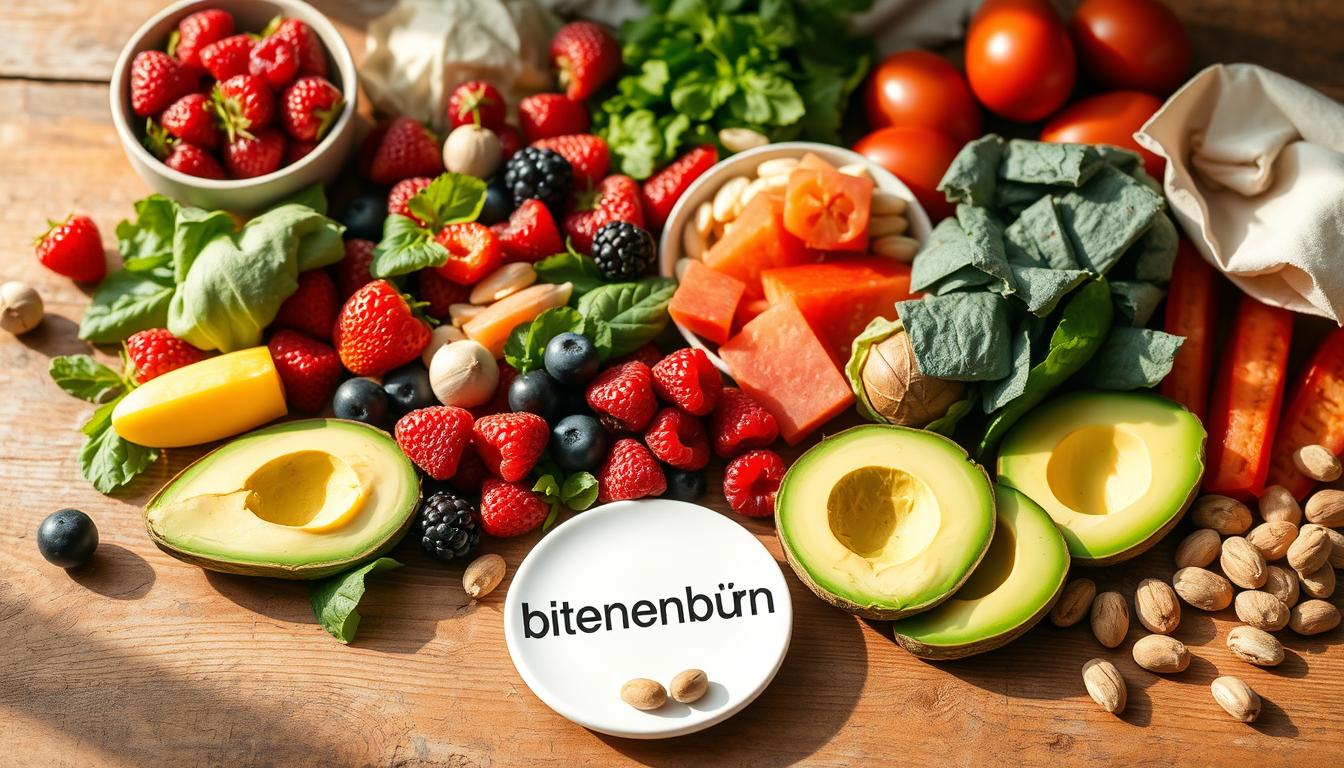
[…] Long-term solutions focus on both mental and physical health. […]
[…] grocery cart are silently reshaping your health? While most shoppers recognize terms like “processed” and “unprocessed,” few grasp how processing levels transform what lands on their plates. The USDA defines […]
[…] The answer lies in understanding how your nighttime habits influence your body’s ability to lose weight and burn fat. With nearly half of U.S. adults trying to lose weight, the focus is often on diet and […]
[…] the rise of processed snack foods, it’s easy to forget the benefits of homemade snacks, which are not only […]
[…] fail because they lack sustainable strategies. To learn more about how to stay motivated to eat healthy, it’s essential to explore effective […]
[…] in American households due to changing work patterns and advancements in technology. The rise of processed and instant foods was further fueled by aggressive marketing strategies. This shift was largely […]